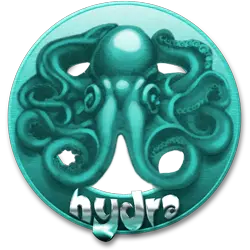
Franklin Booth: The Amazing Artist Who Drew with Lines!

Have you ever seen a drawing that looks like it was made with a bunch of tiny, swirling lines instead of smooth shading? Well, there was an American artist named Franklin Booth (say: FRANK-lin BOOTH) who was a master of this unique and beautiful style. His illustrations looked almost like intricate engravings, even though he created them with pen and ink. Get ready to discover the fascinating world of this talented artist!
Who Was Franklin Booth?
Franklin Booth was born in a small farming town in Indiana in 1874. Unlike many artists who went to fancy art schools, Booth was mostly self-taught. He learned by studying the illustrations in books and magazines, especially the work of European engravers. He was fascinated by the way they could create depth and texture using only lines.
Booth spent a lot of time practicing and developing his own unique technique. He didn’t use traditional shading techniques with smooth tones. Instead, he built up his images using thousands upon thousands of fine lines that followed the contours of the objects he was drawing. This gave his artwork a very distinctive and almost magical quality.

His Unique Style: Lines That Tell a Story
Booth’s drawing style was truly his own. It looked like a combination of pen and ink drawing and the look of an engraving. Here’s what made his style so special:
1. Thousands of Lines: Building Form and Shadow
Instead of using broad strokes or washes of ink to create shadows and form, Booth used a dense network of delicate lines. These lines weren’t just straight; they often curved and swirled, following the shape of the object he was drawing. The closer the lines were together, the darker the area looked. The farther apart they were, the lighter the area appeared.
Imagine drawing a round apple, but instead of coloring it in, you draw lots and lots of tiny curved lines that follow the shape of the apple. Where the apple is darkest, you draw the lines very close together. Where it’s lighter, you space them out more. That’s kind of how Booth created his forms.
2. Evoking Engravings: A Classic Feel
Booth’s linework often gave his illustrations the look of old-fashioned engravings, which were made by carving lines into a metal plate. This gave his artwork a sense of timelessness and craftsmanship.
Think of the detailed lines you might see on an old dollar bill. Booth’s drawings had a similar intricate quality.
3. Rich Texture: Making Things Feel Real
Even though he only used lines, Booth could create a strong sense of texture in his drawings. His lines would follow the surface of whatever he was depicting, making fur look soft, wood look grainy, and fabric look smooth or rough.
Imagine drawing a cat. Booth’s lines would follow the direction of the cat’s fur, making it look incredibly soft and touchable, even though it was just ink on paper.

4. Atmospheric Effects: Creating Mood
Booth’s intricate linework could also create a sense of atmosphere in his illustrations. By varying the density and direction of his lines, he could suggest light filtering through trees, mist hanging in the air, or the darkness of night.
Think of a spooky forest scene. Booth could use his lines to create the feeling of shadows and mystery, making the scene feel eerie and atmospheric.
5. Decorative Elements: Adding Beauty
Booth often incorporated decorative borders and patterns into his illustrations, adding to their visual appeal and giving them an elegant and artistic touch.
Imagine a beautiful frame around a picture that enhances the artwork. Booth often included these kinds of decorative elements in his drawings.
Booth’s Career: Illustrating Stories and Magazines
Franklin Booth became a very successful illustrator, creating artwork for many popular magazines and books during the early 20th century. His unique style was highly sought after, and his illustrations helped to bring stories and advertisements to life.
He worked for publications like:
- The Saturday Evening Post: A widely read magazine that featured his illustrations on its covers and inside its pages.
- Scribner’s Magazine: Another popular magazine that showcased his detailed and artistic work.
- Collier’s Weekly: A magazine that often featured his illustrations of current events and stories.
- Harper’s Magazine: A literary magazine that appreciated his sophisticated style.
Booth also illustrated many books, including classic literature and children’s stories. His illustrations became closely associated with the stories they accompanied, helping readers to visualize the characters and settings.
Teaching and Inspiring Others
Later in his career, Franklin Booth also became a respected teacher of illustration. He shared his unique techniques and his passion for drawing with a new generation of artists. He taught at several art schools and influenced many aspiring illustrators with his distinctive approach.
Even though his style was quite personal, he encouraged his students to find their own unique voices and to pay close attention to the details of the world around them.
Why Was Booth’s Art So Admired?
People were drawn to Franklin Booth’s art for several reasons:
- Originality: His line-based style was unlike anything else at the time. It stood out and made his work instantly recognizable.
- Skill and Craftsmanship: The sheer amount of detail and the precision of his linework were incredibly impressive. People could see the dedication and skill that went into each drawing.
- Beauty and Elegance: His illustrations had a unique beauty and elegance, thanks to his intricate lines and decorative elements.
- Storytelling Power: Despite being made of lines, his illustrations were full of life and emotion, effectively bringing stories to life for readers.

Looking Back at Franklin Booth’s Legacy
Franklin Booth died in 1948, but his artwork continues to be admired by artists and art lovers today. His unique approach to drawing with lines remains influential, and his beautiful illustrations are a testament to his skill and vision. He showed that even with simple tools like pen and ink, an artist could create incredibly detailed, textured, and atmospheric images.
So, the next time you pick up a pen, remember Franklin Booth, the amazing artist who could weave magic with lines and bring stories to life in his own special way! His dedication to his unique vision reminds us that there are many ways to create beautiful and impactful art.










